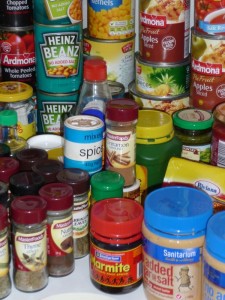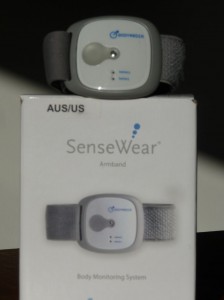
Healthy Pantry
How healthy is your pantry? People often tell me that as soon as they try to buy foods that are healthy they find there is more sugar or salt. I’ve done up a list of pantry items that are healthy – compare this list to the foods in your pantry. I’m always happy to read your comments or suggestions so feel free to post them.
Lower sodium (salt) foods are the hardest to find but they do exist. ‘Low salt’ has less than 120mg of sodium per 100g of food. Try to get products wit h lowest sodium level, you can always add a little bit of salt later when cooking.
Oils, Vinegars, Condiments
Oils: extra virgin olive oil, grapeseed oil or rice bran oil or sunflower oil, sesame oil
Vinegars: White, red-wine, balsamic, rice
Dijon mustard
No added salt tomato sauce
Barbeque sauce (look for lower sodium levels)
Reduced salt soy sauce
Reduced salt mayonnaise made with mono or poly oils such as canola or soya bean
Salsa
No added salt chilli sauce
Canned Goods and Bottled Items
No added salt canned tomatoes
No added salt tomato paste
Canned corn
Canned beetroot
Other canned vegetables (eg canned bamboo shoots, water chestnuts, peas)
Reduced salt chicken broth
Canned beans: no added salt baked beans, kidney beans, chick peas
Canned tuna in springwater
No added salt canned salmon
No added sugar canned fruit: canned apples, canned pears or apricots, canned pineapple
Canned lite coconut milk or canned coconut flavoured low fat evaporated milk
Canned low fat evaporated milk
Canned soup: salt reduced tomato soup, wholegrain vegetable soups
Seasonings
Iodised salt (small container)
Black pepper
Dried herbs and spices: ground cumin, cayenne pepper, chilli powder, rosemary, thyme, oregano or basil, dill, cinnamon, ground ginger, coriander, cloves, bay leaves, nutmeg, turmeric, low salt curry powder
Vanilla extract
Grains and Legumes
Assorted wholemeal pasta
Rice: basmati (regular and microwaveable) or doongarra, arborrio, brown rice
Wholewheat cous cous
Barley
Rolled oats (traditional)
Breakfast cereals: weet-bix or Vita Brits or untoasted muesli or Just Right
Crackers: vitawheat, ryvita, corn thins
Tortillas or long life wholemeal mountain breads
Dried lentils
Popping corn (not packaged, to be used in air popper)
Baking Products
Plain white flour
Plain wholemeal flour
Baking powder
Plain baking cocoa (unsweetened)
Baking soda
Unprocessed wheat bran
Yeast (optional)
Pure corn flour
Sugars: brown, white (small bag)
Artificial sweetener: Splenda, Equal, Hermesetas (optional)
Honey, pure maple syrup
Jam – no added sugar or home made or jam with at least 50% fruit
Nuts, Seeds and Dried Fruit
Raw nuts: walnuts, almonds
Dried Fruit: dried apricots, dates, sultanas
No added salt peanut butter
Beverages
Herbal teas
Teas: black or green
Coffee: instant or beans
Soda water or mineral water (optional)



